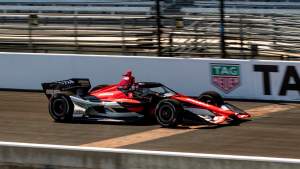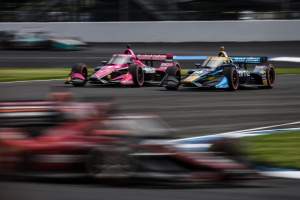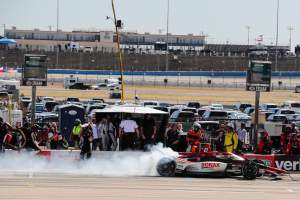An interesting thought dawned upon me as Scott Dixon crossed the line to set the second fastest pole qualifying run in the history of the Indianapolis 500: This car is 10 years old!
But fear not, fans of change, IndyCar’s current DW12 machine is going to look quite different in 2024 with the introduction of new bodywork, and a new lightweight aeroscreen.
The aeroscreen, which we’ll cover in detail shortly, will likely look similar to what we have now, so the big change in appearance is set to come from some bodywork tweaks in development for when the new hybrid power unit comes in for 2024.
“Because in 2024, what will change to the car is what we need to change to take the new engine and hybrid system,” IndyCar president Jay Frye told The Race in an exclusive interview before the Indy 500.
“There could be some things that change because of that.
“Because of the speeds, we might have to do some other things with the wings, front and rear wings, with the Speedway.
“It’s 100 more horsepower, coming out of the box, plus the hybrid piece could add another 100. That’s substantial, too. So, a lot of good things going on.
“When we went from the OEM manufacturer kits [pictured in 2017, below] to the current one, that looked like a brand new car, it looked completely different.
“So I think in 2024 visually, it’ll seem like a different car because of some of the things we’re doing.
“It won’t be as drastic as ’17 to ’18. But from ’23 to ’24 it will look like a different car.”
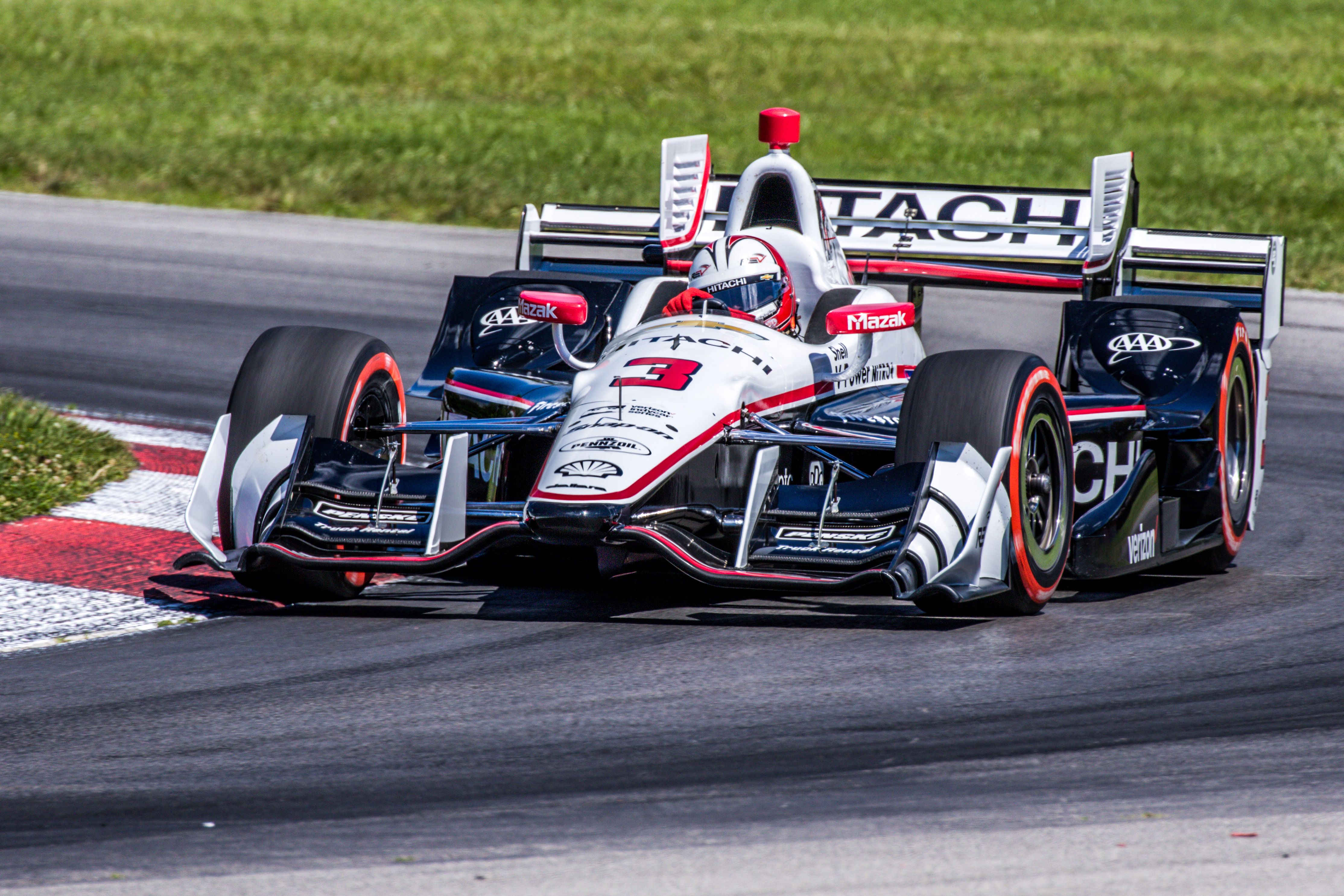
At the moment the proposed changes are for Indianapolis only and Frye added “we’re not convinced quite yet that we need to do it for the road course and street courses”, as his team has already been running simulation tests to trial different options in anticipation of the changes.
The aeroscreen – introduced in 2020 – added around 53 pounds (just over 24kg) at the front of the car, and high up, too, meaning teams and drivers had to go back to the drawing board on car set-ups to remove an element of in-built mid-corner understeer.
It also created a fair amount of heat in the cockpit – which IndyCar has worked hard to address – but the visibility in the car and the safety it has provided especially has made the device a mainstay of the series.
There have been multiple instances of wheels hitting the screen – perhaps most famously for Conor Daly at the 2021 Indy 500 – and onboard videos of debris striking the screen and potentially life-changing accidents being avoided because of the canopy, which is effectively a halo with a screen wrapped around.
For 2024 the new power unit is going to make the car heavier, which comes with handling and safety implications.
The ‘Gen2’ aeroscreen, as it’s being dubbed, is set to shave off somewhere in the region of 18lbs (almost 7kg) if the suppliers are all successful in their bid to shed weight.
Frye confirmed to The Race that since the aeroscreen’s inception the partners involved – Red Bull Advanced Technologies, Pankl and PPG – have been looking at ways to reduce the weight and are all part of the update work.
“We’ve got this opportunity in 2024 to lighten, do some different things with the car, we want to lighten it up some more. So that’s Gen2 of the frame,” added Frye.
“So basically, externally, you really couldn’t tell the difference between the two, it’s all internal. So whether it’s a lattice- or honeycomb-type property in the internals, we’ll lighten it up to 50%.
“But what currently is so substantial, what we’ve got to do is do a lot of the load tests, which we think will be fine. But until you actually go and do it, you don’t know. So that’s the next phase of that.”
It’s still speculation at this stage what the aeroscreen might weigh, especially as there is still work being done to see what pattern the internals will be made with when it’s 3D-printed by Pankl, and also whether the PPG screen will include technology to reduce heat, water build-up and/or anti-fogging properties for wet races.
Speaking of wet races, IndyCar’s looking at the data from the recent Indianapolis road course race, where its information-gathering has stretched from onboard cameras and telemetry to asking drivers to draw a picture of where water built up on the screen in a bid to get a better idea of how the screen performed.
During a late downpour, some drivers struggled down the main straight, although views were mixed on if this was a symptom of the aeroscreen or just wet racing and spray in general.
Some drivers like Daly had a build-up of water in the centre line of the screen, but it’s possible problems like this were caused by water getting between tear-offs, leading Simon Pagenaud to call for windscreen wipers to be introduced.
It was the first race test for the aeroscreen in the wet, so the series is combing through every piece of data it can get its hands on because wet races and therefore tests of the screen in the wet are so infrequent.
The new screen will slide on in the same way the current one does, so there isn’t likely to be any need to change the mounting points, depending on how much has to change with the hybrid unit coming in.
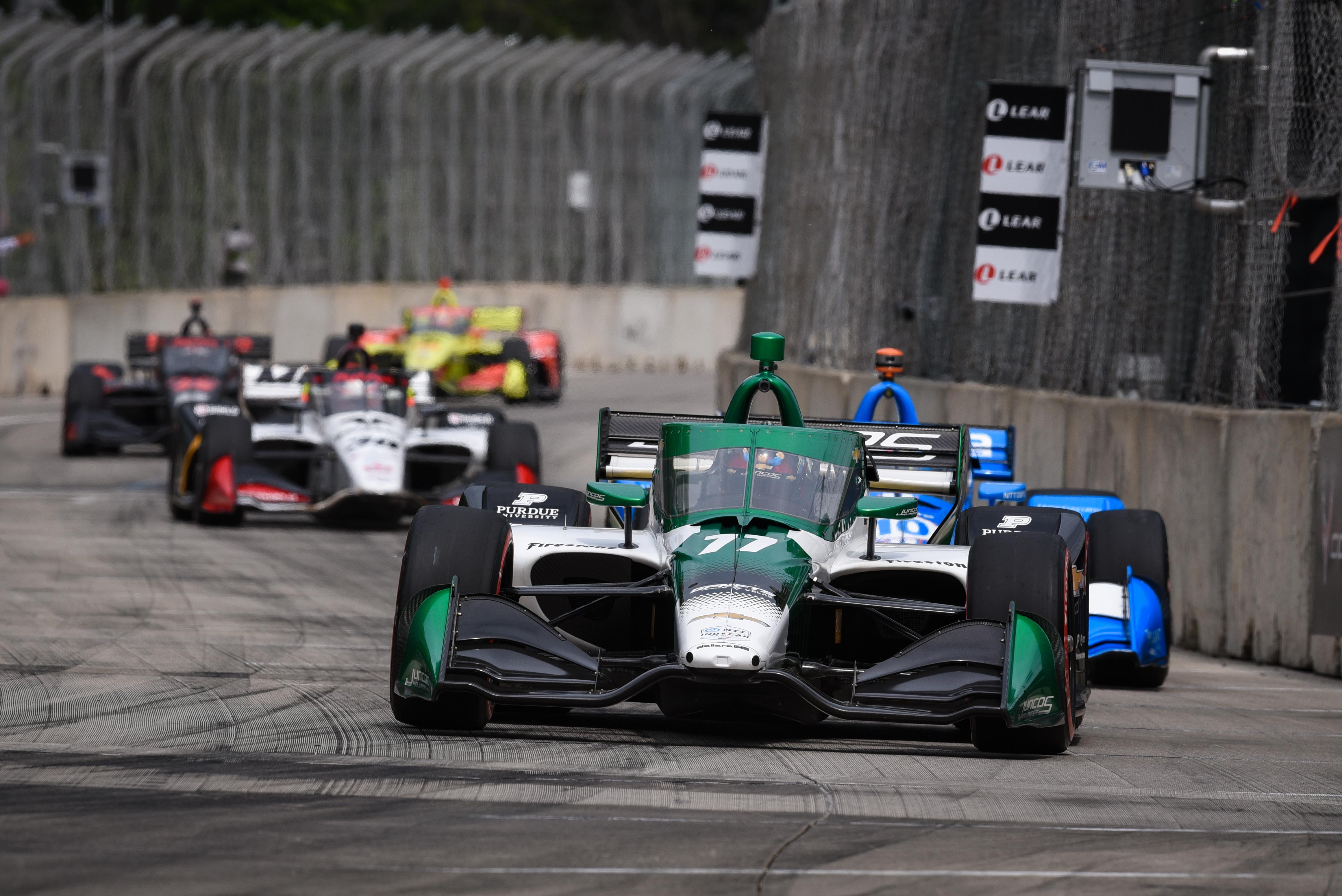
Some onlookers have been calling for a new chassis to marry up with the new power unit and to do it at the same time, and while that idea has been well-received by some, others are concerned with the cost implications.
There are 27 cars in the IndyCar Series and at $350,000 a pop, that’s $9,450,000 in Dallara chassis before you’ve even considered back-up cars, which most teams have.
With the current car close to speed records at Indianapolis and creating some of the best racing in elite-level motorsport right now away from the Brickyard, it’s easy to see the trepidation from the series and team owners over having a new chassis for the sake of it.
It’s much more likely a phased introduction of updates will refresh the DW12.
“It won’t happen in ’24,” says Frye on that new chassis.
“People are like ‘hey, you’re getting a new engine, why don’t you just do it then’. That seems simple.
“It’s also impossible to have 100 of them built by then. You just can’t do that. So you look at ’25, how does that look? Does it have to be a new chassis? Again, we’re looking at different things.
“There was a pretty big hit [crash, for Dalton Kellett in Indy 500 practice] here a couple days ago.
A couple notes from today:
– The AMR Safety team was at my car literally seconds after I stopped. Best in the business.
– The car recorded >100g’s but my earpieces only logged 38. So the SAFER barrier and the IndyCar’s safety system worked exactly as designed.— Dalton Kellett (@Dalton_Kellett) May 23, 2022
“So if you think about that, it was 100G hit on the car. The tub survived, the tub is reusable. The driver’s OK. So this car, this chassis, has done a really, really good job.
“It was the exact outcome of what we wanted, between the SAFER barriers and between the car doing what it’s supposed to do. Everything that happened is supposed to, when you draw it up, that’s what’s supposed to happen.
“There’s a lot to a new chassis and the safety requirements of the safety test and the safety testing that it has to go through.
“To save 40 pounds (around 18kgs), is it worth it? I don’t know.
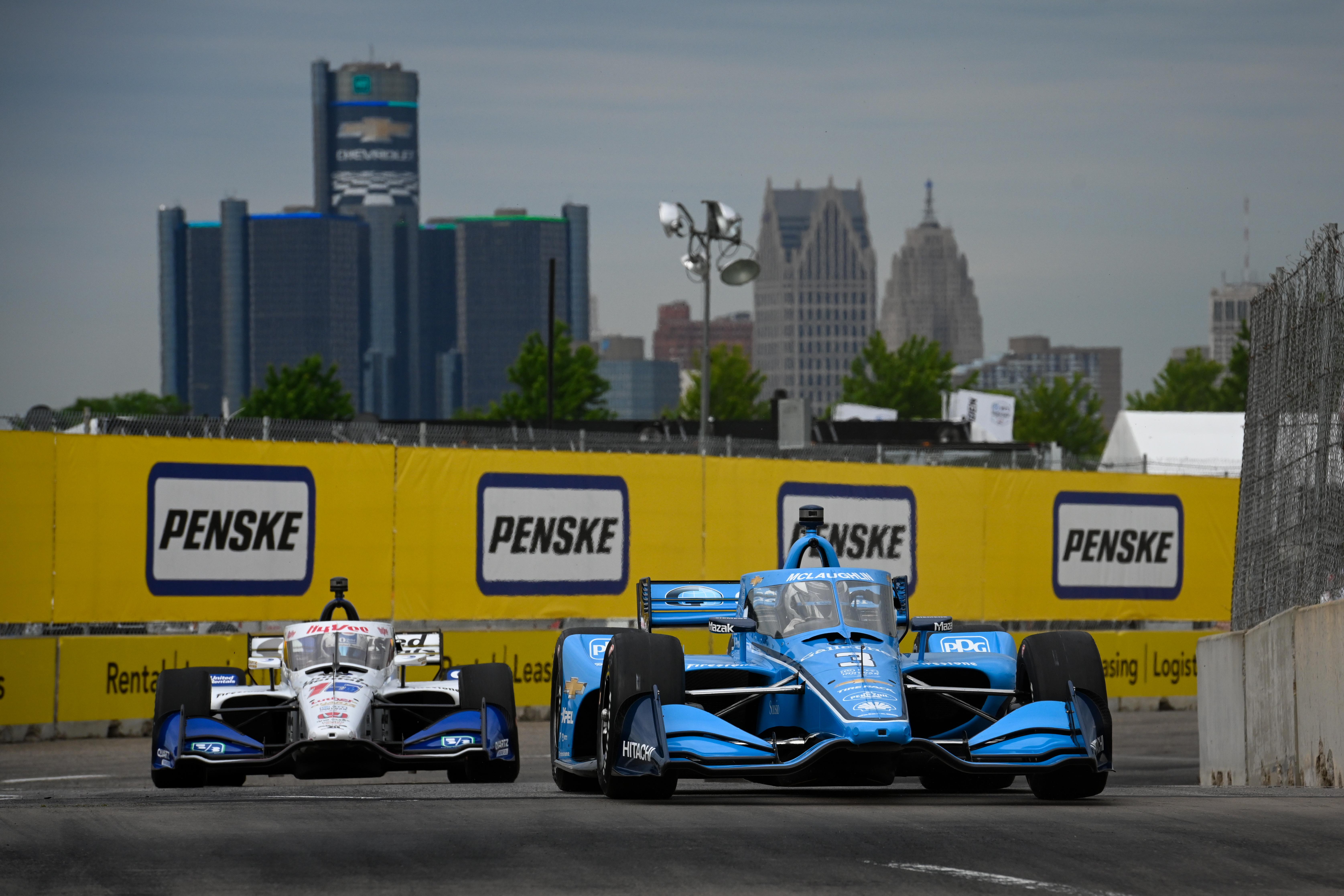
“Everything that we’ve done that’s added weight to the car has been done because of safety.
“Think about the requirements that we have. From a safety perspective, the cars are 241mph, one went 243.7mph the other day, there’s different safety requirements, different things that we have to do that maybe others don’t.”
There’s no easy answer as to whether IndyCar ought to prioritise a new chassis or not.
However, thinking of the big picture, this championship did well to survive the COVID pandemic and certainly there are many people who believe that might not have happened had Roger Penske not bought the series.
It’s managed to expand its grid and make its cars safer in that period, which is more than some other championships have been able to do. And it feels like every year it attracts even better drivers and becomes that much more competitive.
While the car is absorbing 100g impacts and coming closer than ever before to its mythical Indianapolis qualifying record from 1996, is now the time to be asking for a $10million investment in chassis?
Getting the new aeroscreen and engine in place seems a better focus of time and resources.



